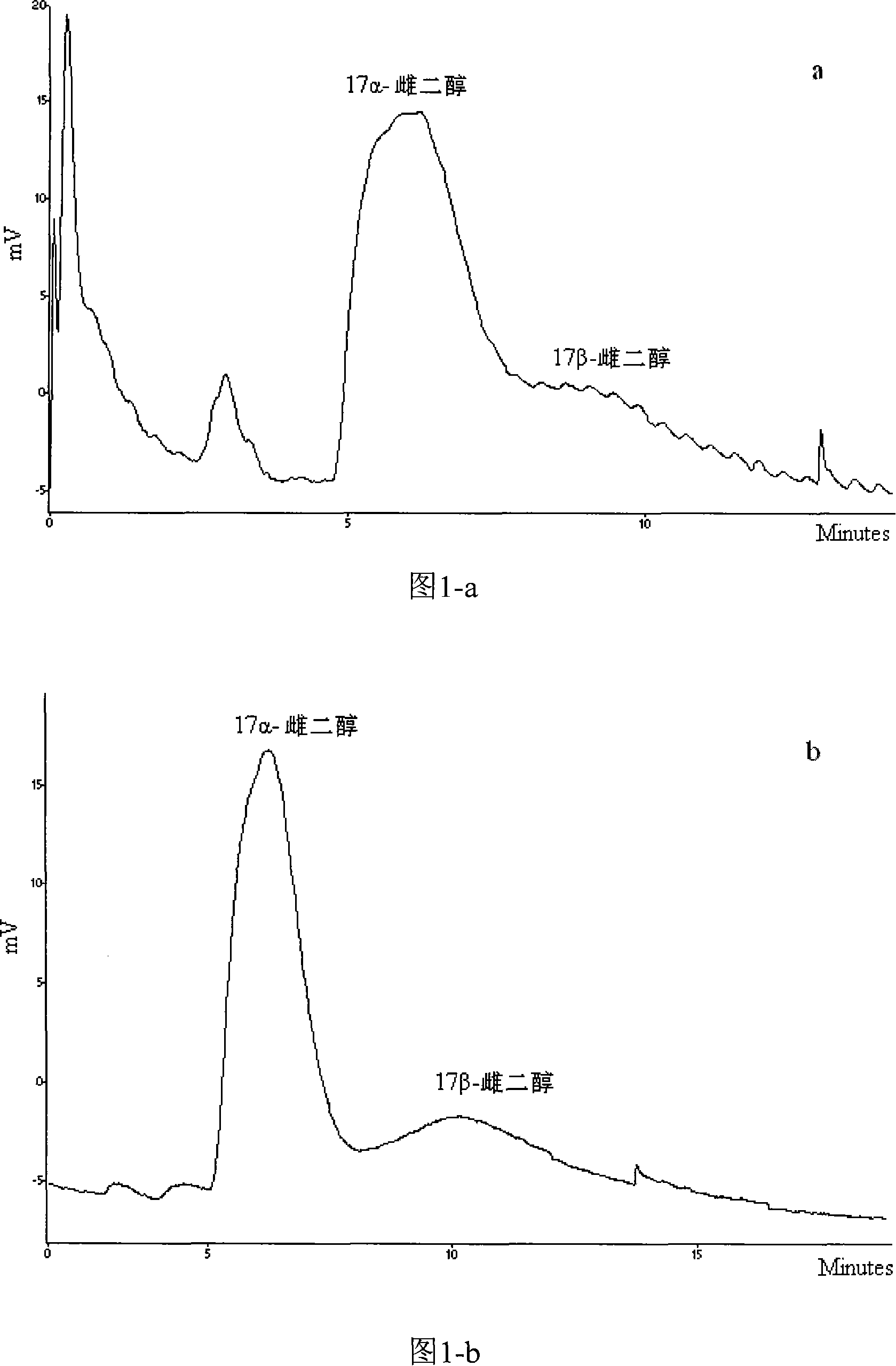Preparation method of 17beta-estradiol molecular engram polymer and use
A molecular imprinting and polymer technology, applied in material separation, analysis materials, instruments, etc., can solve the problems of expensive investment, impossible to comprehensively promote, unsatisfactory reproducibility and accuracy, etc.
- Summary
- Abstract
- Description
- Claims
- Application Information
AI Technical Summary
Problems solved by technology
Method used
Image
Examples
Embodiment 1
[0036] According to the following proportions, such as 0.125mmol, 0.167mmol and 0.25mmol of 17β-estradiol as the template molecule, 1mmol of methyl methacrylate as the functional monomer, and 1mmol of trimethylolpropane trimethacrylate as the crosslinker 20mL chloroform is used as porogen, 0.102mmol azobisisobutyronitrile is mixed and dissolved, firstly methyl methacrylate, 17β-estradiol and 10mL acetonitrile are added to a 100mL medical saline bottle for ultrasonic treatment and mixing, washed into Seal with nitrogen for 3 minutes, and leave it at room temperature for more than 3 hours; then add the above mixture to the crosslinking agent 1mmol trimethylolpropane trimethacrylate, the remaining 5mL of porogen and initiator, mix well, and then flush with nitrogen for 3 minutes to seal. Precipitation polymerization is carried out in a vessel using thermal or photoinitiated means. The thermal initiation reaction condition is that the polymerization temperature is controlled at a ...
Embodiment 2
[0045] Use 0.125mmol and 0.25mmol 17β-estradiol as template molecule, 1mmol trifluoromethacrylic acid as functional monomer, 1mmol trimethylolpropane trimethacrylate as crosslinking agent, and 15mL acetonitrile as Pore agent, 0.0852mmol of azobisisobutyronitrile is mixed and dissolved, respectively added to 100mL medical saline bottle, ultrasonically treated for 3min, and N 25min, seal. Utilize 35W ultraviolet lamp to irradiate at 365nm for 48h, ultraviolet polymerization UV 365 nm control at 0 ~ 8 ℃, centrifugal separation. The synthesis method of CP is the same, but no template molecule is added.
[0046] The obtained polymer was transferred to a round bottom flask, mixed with 40mL of acetone twice, and the fine particles in the upper layer were removed after standing, and then the acetone was removed in vacuum with a rotary evaporator to dryness. Pack the polymer into the chromatographic column (4.6×100mm) by hand, and wash it with a Waters model 510 high-efficiency li...
Embodiment 3
[0060] 0.125mmol and 0.25mmol of 17β-estradiol were used as the template molecule, 1mmol of trifluoromethacrylic acid as the functional monomer, 1mmol of trimethylolpropane trimethacrylate as the cross-linking agent, and 15mL of acetonitrile as the porogen agent, 0.0852mmol azobisisobutyronitrile was mixed and dissolved, respectively added to 100mL medical saline bottle, treated with ultrasonic wave for 3min, and passed through N 2 5min, seal. Utilize 35W ultraviolet lamp to irradiate at 365nm for 48h, ultraviolet polymerization UV 365 nm control at 0 ~ 8 ℃, centrifugal separation. The synthesis method of CP is the same, but no template molecule is added.
[0061] The obtained polymer was transferred to a round bottom flask, mixed with 40mL of acetone twice, and the fine particles in the upper layer were removed after standing, and then the acetone was removed in vacuum with a rotary evaporator to dryness. Pack the polymer into the chromatographic column (4.6×100mm) by hand...
PUM
 Login to View More
Login to View More Abstract
Description
Claims
Application Information
 Login to View More
Login to View More - R&D
- Intellectual Property
- Life Sciences
- Materials
- Tech Scout
- Unparalleled Data Quality
- Higher Quality Content
- 60% Fewer Hallucinations
Browse by: Latest US Patents, China's latest patents, Technical Efficacy Thesaurus, Application Domain, Technology Topic, Popular Technical Reports.
© 2025 PatSnap. All rights reserved.Legal|Privacy policy|Modern Slavery Act Transparency Statement|Sitemap|About US| Contact US: help@patsnap.com


